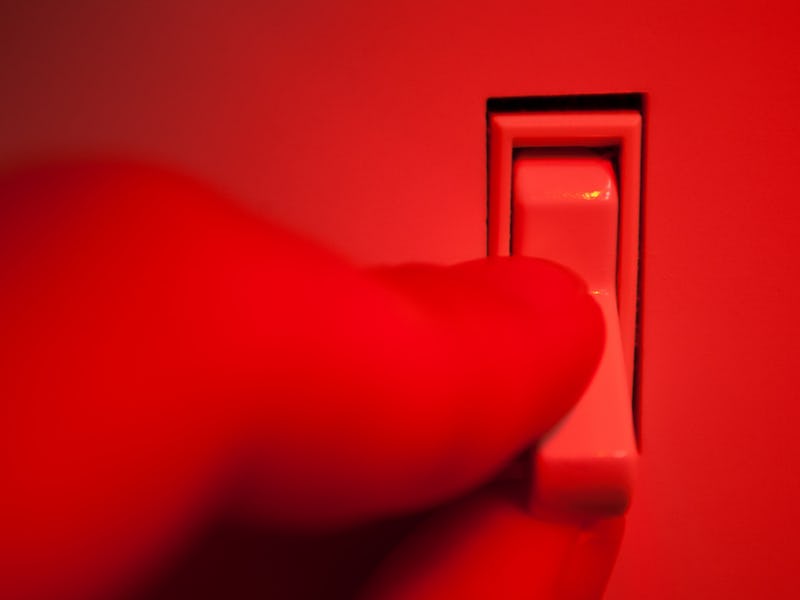On/Off: The Century of the American Light Switch Is Over
America's little toggle that dominated for 100 years. It's reign is over.

Early electrical lighting wound its way into homes through webs of wire and hanging pendant bulbs. At the turn of the 20th century, turning on the lights meant making your way to each light and twist a key in the bulb’s socket. But New Yorkers William J. Newton and Morris Goldberg, perhaps sick of stubbing their toes in darkened rooms, had a better, brighter idea, a switch that, stuck near a door or entryway, could turn on lights from a safe distance.
Newton and Morris received a patent for the electrical wall-switch in 1917, but the tech was slow to catch on at first. Their invention was brilliant in its simplicity — an on-off system for controlling the circuit to a bulb, hidden beneath an attractive faceplate and toggle, but homeowners viewed light switches as luxury items because the switches required the expense of running wires from the ceiling to the wall.
Over the past 98 years the switch’s luxury has faded into ubiquity. And, like the coelacanth or crocodile, the light switch has evolved with remarkable lethargy. What made a switch cutting-edge in the 1950s, as this issue of Popular Mechanics notes, was a little neon bulb embedded in the toggle to help locate it in the dark. By the end of the decade, Joel Spira created the dimmer switch to give consumers analogue incandescent control, but the binary toggle endured. The next mutation, the rocker, wouldn’t arise until the eighties, when it essentially flattened the toggle into a fat seesaw — same function, slightly different form. (Let us also take a moment of silence for the ill-fated Clapper.)
The future of the toggle switch as fixture, however, looks dim. A smart lighting system, centrally controlled by a computer, has little use for something that commands electrical currents in such an antiquated manner. (Imagine if every time you wanted to watch Netflix, you had to first plug your TV instead of just pressing a button on the clicker.) Certain aspects of smart lighting, such as mood-sensing, may be a ways off, but customization lies closer to the horizon. Such systems offer not just fine-tuned dimming, but lights that change colors or light up on a schedule.
Smart lights controlled by the recently-expanded WeMo app, for example, turn on and off with the touch of an icon, not a physical thing. A new species of toggle will survive into the next century, following a path blazed the floppy disk: a symbol on a screen. The icon WeMo uses to control lights is a familiar one — a circle pierced by an upward-pointing line — found on computers, game systems, and TVs. The origins of that upward line? A label, used by WWII engineers, for a powered-on toggle.